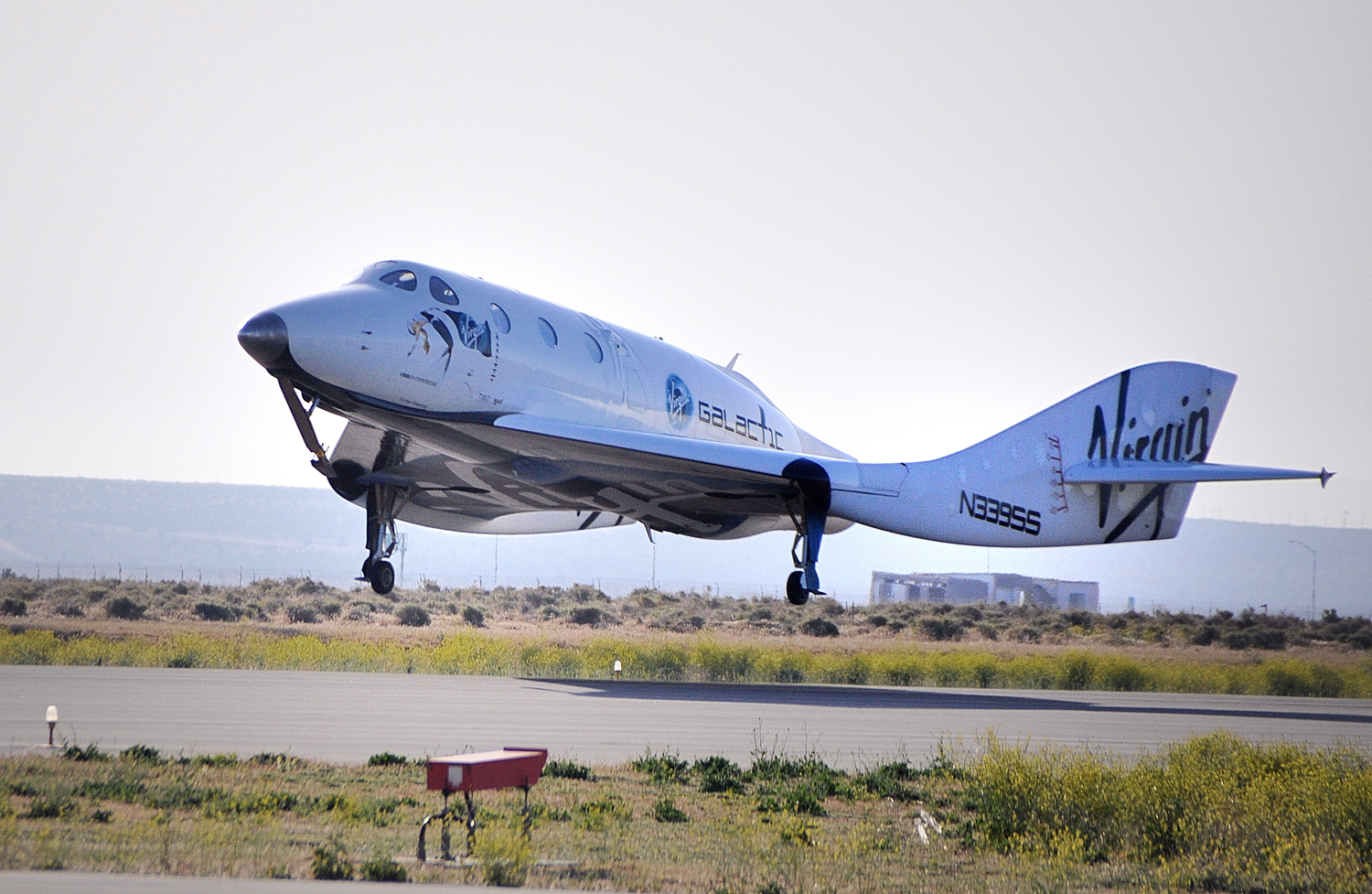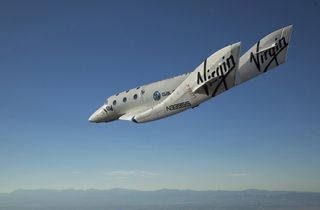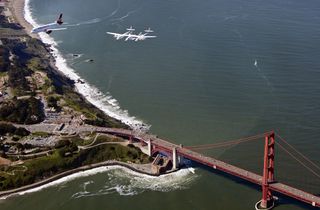
Private Rocket Ship for Space Tourists Takes Break from Test Flights

The space tourism company Virgin Galactic is taking a summer break from testing its suborbital rocket plane – a hiatus in preparation for the next stage of demonstration flights.
Virgin Galactic's WhiteKnightTwo and SpaceShipTwo launch system entered a quiet period of data assessment after a campaign of piloted glide tests, including a midair evaluation of the craft’s unique re-entry technology.
Technicians at the Mojave Air and Space Port from Scaled Composites, the designers and builders of the system, will apply lessons learned from the SpaceShipTwo glide flights as they prepare for the next phase of testing, George Whitesides, chief executive and president of Virgin Galactic, said.
“The downtime will be dependent on the judgment of Scaled engineers as they process the information gained from the extensive and successful recent flight testing,” Whitesides told SPACE.com.
Another SPACE.com source close to the SpaceShipTwo project indicated that the Scaled Composites team has entered a couple-of-months- long period of planned vehicle updates.

Glide flights
The downtime follows the 15th glide flight of the privately built SpaceShipTwo. The vehicle was released June 27 at a high altitude from its mothership, WhiteKnightTwo, which has been dubbed VMS Eve. [Gallery –SpaceShipTwo Makes First Glide Flight]
Get the Space.com Newsletter
Breaking space news, the latest updates on rocket launches, skywatching events and more!
During that 7-minute, 39-second glide, the craft was put through a series of tests before rolling to a runway stop. “All objectives achieved. Dynamic pressure envelope further expanded,” according to a SpaceShipTwo test summary log.
The SpaceShipTwo, christened the VSS Enterprise, recently achieved a milestone in its step-by-step agenda: two successful glide flights within 24 hours – on June 14 and June 15 – proving the rocket plane and WhiteKnightTwo are capable of a quick turnaround.
Also noteworthy was that astronaut Brian Binnie, one of the test pilots for the first-generation SpaceShipOne, has repeatedly flown in SpaceShipTwo.
On Oct. 4, 2004, Binnie piloted SpaceShipOne’s second Ansari X Prize flight, bagging the $10 million X Prize purse. His flight peaked at 367,442 feet (69.6 miles; 112 kilometers), and also set a winged-aircraft altitude record, breaking the mark set by the North American X-15 in 1963.
Taking a co-pilot seat in several SpaceShipTwo glides was the president of Scaled Composites, Doug Shane. He has risen in the ranks at Scaled and was the first engineer hired by Burt Rutan, founder of the company when it opened its doors in 1982.

The cadre of fliers who have piloted SpaceShipTwo includes Pete Siebold, Mike Alsbury, Mark Stucky and Clint Nichols.
SpaceShipTwo was rolled out for public viewing in December 2009. The craft’s maiden free flight took place Oct. 10, 2010.
Summer break
The next round of testing for SpaceShipTwo is expected to involve a hybrid motor mounted within the craft. This engine is being provided by Sierra Nevada Corp. and is designed to propel the vehicle and its paying passengers to the edge of space.
In earlier interviews with SPACE.com, Whitesides said short-to-medium-to-long burns of the hybrid motor is on the test schedule.
Virgin Galactic’s commercial flight plans entail lofting customers on suborbital hops at a price of $200,000 per seat.
No specific timeline has been established for the first commercial launch, which will be based on the completion of a lengthy flight-test program to certify safe operations.
Commercial flights are expected to take place at Virgin Galactic’s future headquarters at Spaceport America in New Mexico.
Leonard David has been reporting on the space industry for more than five decades. He is a winner of this year's National Space Club Press Award and a past editor-in-chief of the National Space Society's Ad Astra and Space World magazines. He has written for SPACE.com since 1999.
Join our Space Forums to keep talking space on the latest missions, night sky and more! And if you have a news tip, correction or comment, let us know at: community@space.com.

Leonard David is an award-winning space journalist who has been reporting on space activities for more than 50 years. Currently writing as Space.com's Space Insider Columnist among his other projects, Leonard has authored numerous books on space exploration, Mars missions and more, with his latest being "Moon Rush: The New Space Race" published in 2019 by National Geographic. He also wrote "Mars: Our Future on the Red Planet" released in 2016 by National Geographic. Leonard has served as a correspondent for SpaceNews, Scientific American and Aerospace America for the AIAA. He has received many awards, including the first Ordway Award for Sustained Excellence in Spaceflight History in 2015 at the AAS Wernher von Braun Memorial Symposium. You can find out Leonard's latest project at his website and on Twitter.